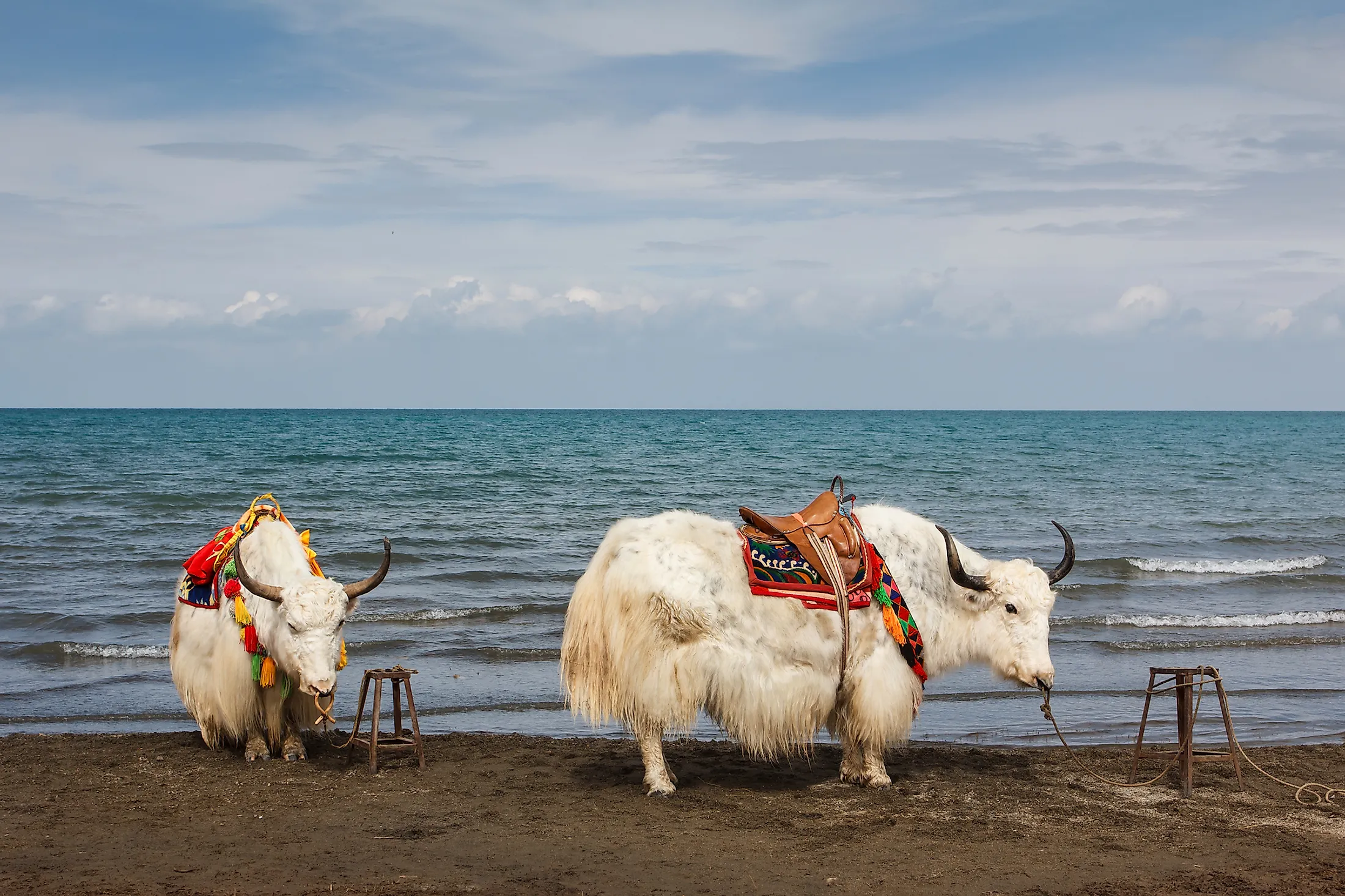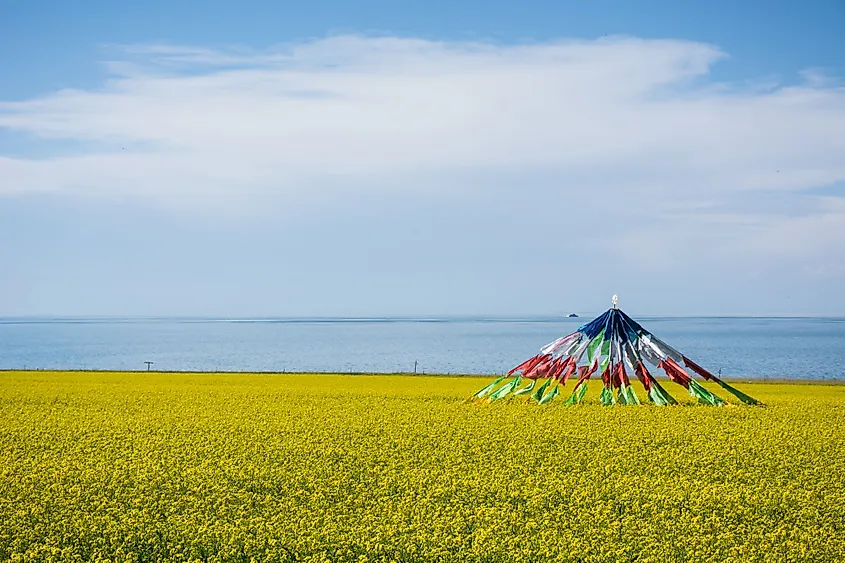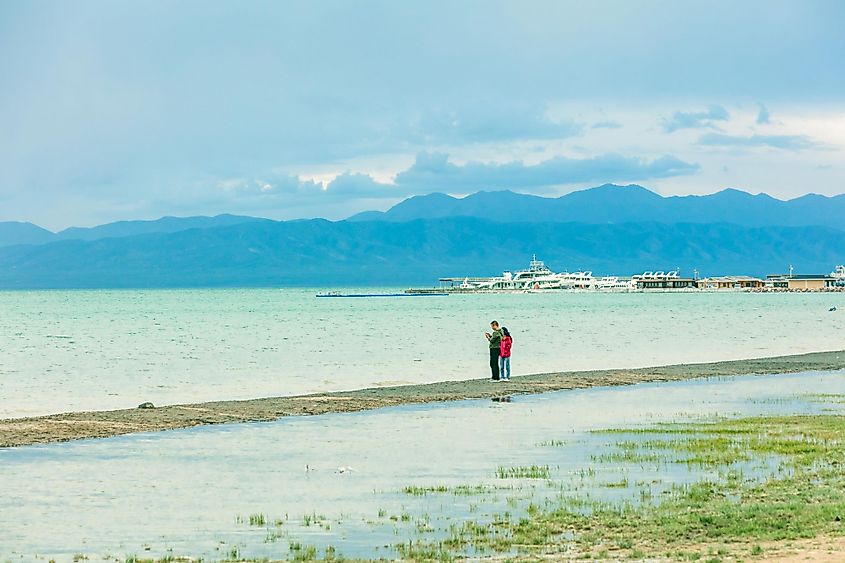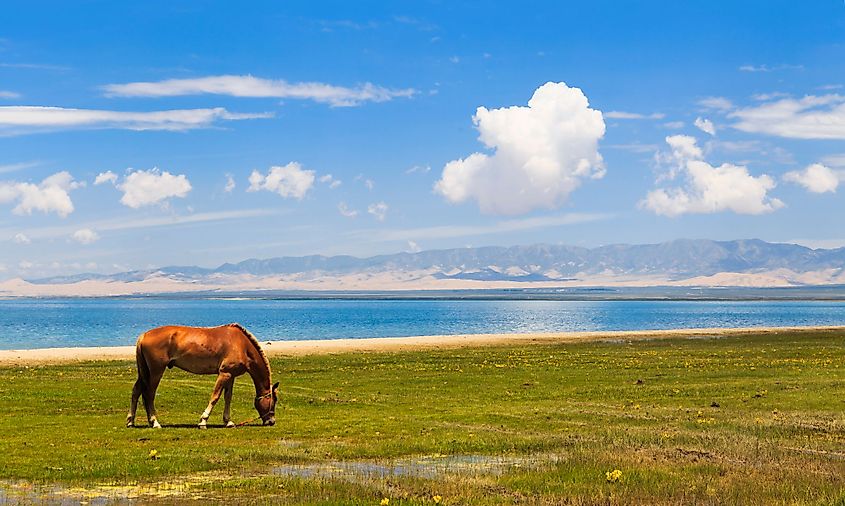
Qinghai Lake
Qinghai Lake is an alkaline and saline lake that is situated in an endorheic basin in the northeastern part of the Qinghai Province of the People’s Republic of China. The lake is located in the Gangcha County between the Hainan Tibetan and the Haibei Tibetan Autonomous Prefectures, approximately 100km to the west of the city of Xining in a depression of the Tibetan Plateau at an elevation of 3,260m. The lake is referred to by various names such as Koko Nor, Chˈinghai Lake, Tso Ngömpo, and Blue Lake.
Geography

Qinghai Lake is situated completely inside the Qinghai Lake National Park and is surrounded by Datong Mountain in the north, Qinghai Nanshan Mountain in the south, Riyue Mountain in the east, and the Xiangpi Mountain in the west. The size of Qinghai Lake has fluctuated several times and at present, the lake covers an area of 4,543 sq. km. Qinghai Lake is considered the largest lake in the People’s Republic of China and also Central Asia’s largest mountain lake without a river outlet. Being situated at a high elevation of 3,260m, Qinghai Lake is also the highest altitude inland lake among the world’s 50 largest lakes. The lake currently reaches a maximum depth of 32.8m.

It is estimated that over 23 rivers and seasonal streams drain into Qinghai Lake with 5 permanent streams providing the majority of the water inflow of the lake. However, the high evaporation rate compared to the relatively low inflow has turned Qinghai Lake into an alkaline and saline lake. The Sand Islands and Bird Islands (Cormorant and Egg Islands) are also located in the lake. During the summer months, the waters of the lake have a temperature of 18 to 20°C while during winters, the surface of the lake completely freezes and is covered with thick sheets of ice.
Geological studies have revealed that Qinghai Lake was formed about 210,000 years ago and during its early stages of formation, the lake was an exoreic freshwater lake that was connected with the Yellow River. About 150,000 years ago, Qinghai Lake became isolated from the Yellow River due to the drastic uplift of the Qinghai-Tibetan Plateau.
Ecology

The Qinghai Lake is an important water body that provides an ideal habitat for several wild animals and also acts as a natural barrier that helps in preventing the eastward expansion of desertification in western China. The native fish species that are found in Qinghai Lake include the naked carp and four different species of stone loaches. The Qinghai Lake is situated at the crossroads of the Central Asian and East Asian Flyways and serves as an important stopover for several migratory birds. The lake also serves as an important breeding ground for numerous birds like the great cormorants, bar-headed geese, Pallas’s gulls, brown-headed gulls, etc. The mountains surrounding the Qinghai Lake serve as Important Bird Areas where many birds like the Przewalski’s finch, Tibetan rosefinch, and the Sinai rosefinch are found. The endangered Przewalski’s gazelle that is endemic to China and is considered as one of the world’s rarest ungulates, is found along the shores of Qinghai Lake.
Cultural Importance

The Qinghai Lake is regarded as one of the sacred lakes by the Tibetan Buddhists. According to the Buddhist cultures, it is customary for the pilgrims to circumnavigate the lake in the Year of Goat, to circle the mountains in the Year of Horse and the forests in the Year of Monkey. A temple and a few hermitages are situated on an island in the western part of Qinghai Lake. The Han Chinese, Hui Chinese, Tibetans, and Mongols live along the shores of Qinghai Lake.











